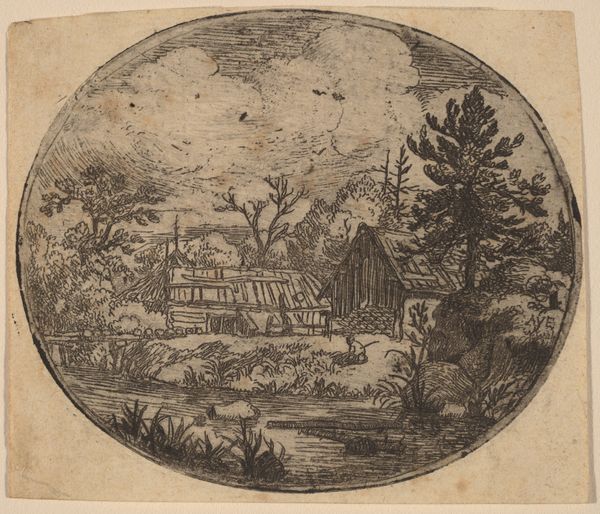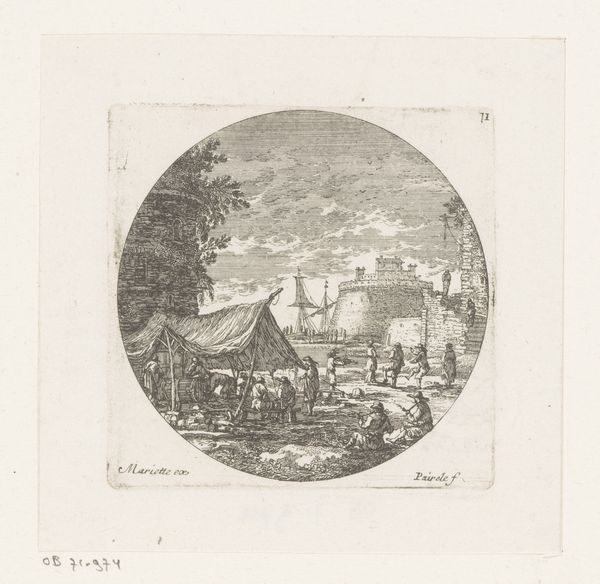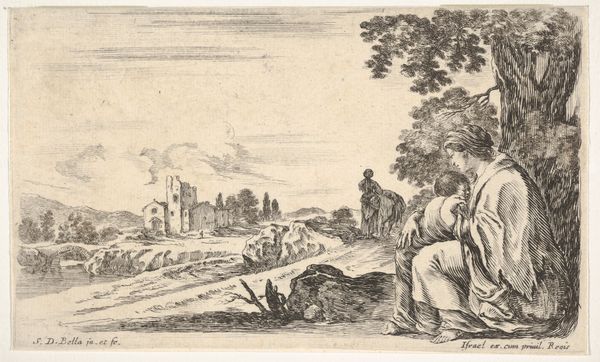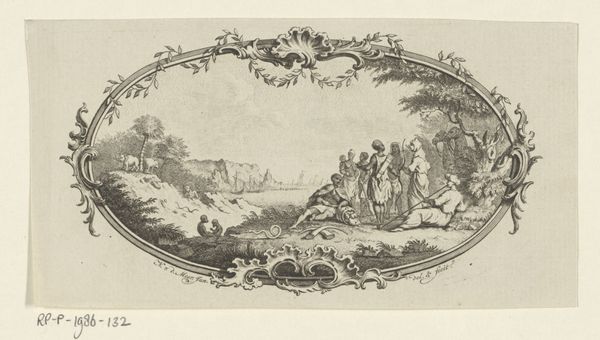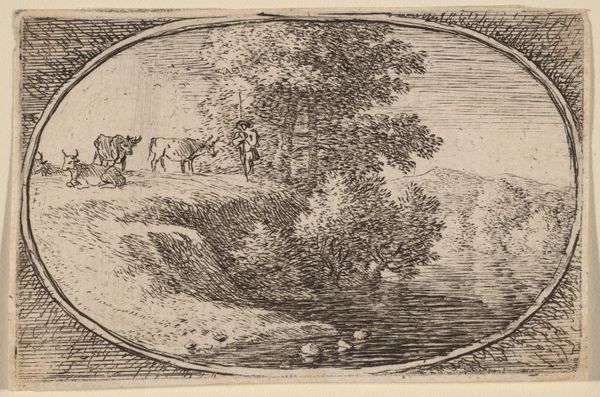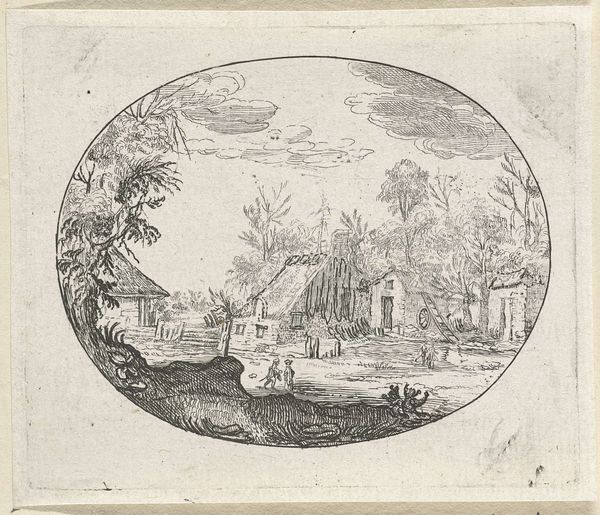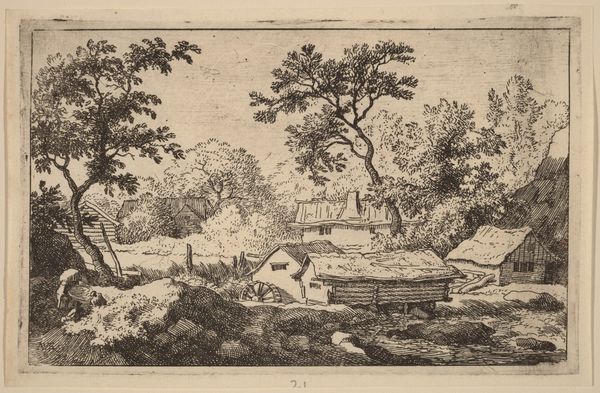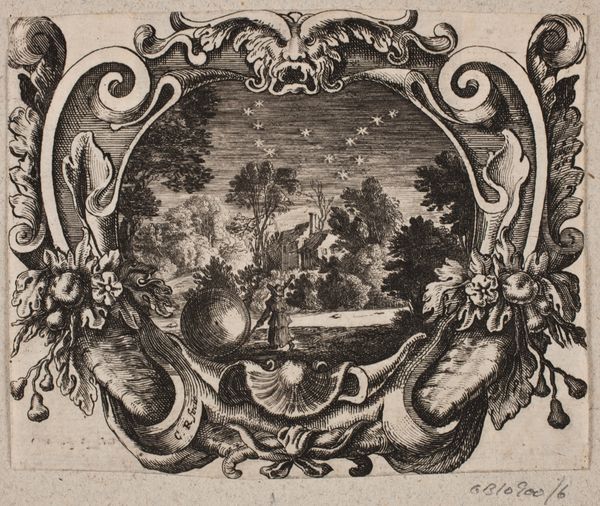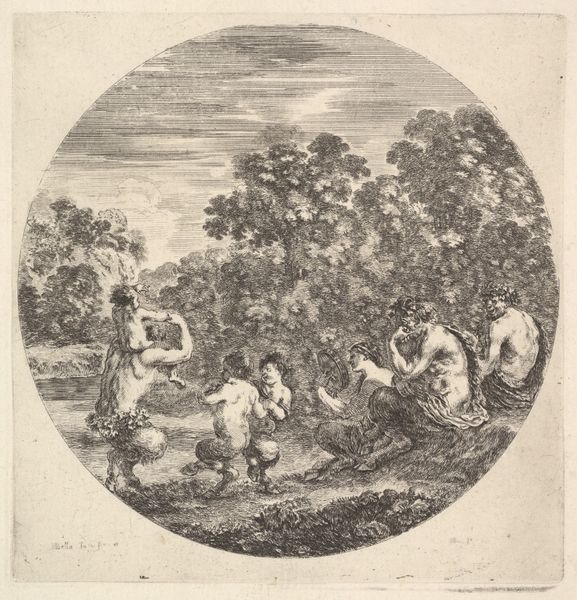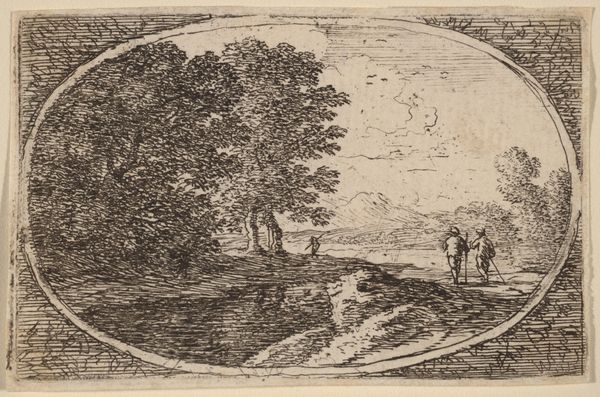
Dimensions: Sheet (trimmed): 3 1/2 × 5 11/16 in. (8.9 × 14.5 cm) Plate: 3 3/8 × 5 3/8 in. (8.5 × 13.6 cm)
Copyright: Public Domain
Editor: Here we have Charles Michel Campion's "Autumn (Wine Harvest)," created in 1768. It’s an engraving, a scene captured within an oval frame, and it feels surprisingly…contained, doesn’t it? Almost like a memory preserved. What do you make of it? Curator: The containment is key. The oval, heavily adorned with grapes and vines, acts as a liminal space, separating our contemporary gaze from a carefully constructed past. Consider the figures—they’re not merely harvesting grapes. They’re participating in a ritual, a cycle of nature and human effort codified through generations. The image is less about documenting a specific wine harvest and more about the enduring symbolism of abundance and community. What feeling does that elicit? Editor: It makes me think about how traditions get passed down and the symbolism attached to them, even if we don't consciously think about it. Is the baroque style a hint, pointing us towards interpreting it with symbols? Curator: Precisely. Baroque loves the theatrical, the emotive. This scene, seemingly simple, uses carefully orchestrated symbols to evoke an idealized, harmonious past. The vineyard itself, punctuated by the church spire, presents an ordered landscape—a symbolic alignment of labor, faith, and nature's bounty. Consider also the contrast between the enclosed, cultivated vineyard and what might lie beyond; is the artist making a statement about the safe predictability of rural life? Editor: That’s fascinating. It's almost like the artist is using these symbols to create a specific emotional landscape, one of reassurance and continuity. Curator: Exactly! It reflects a deep-seated cultural yearning for stability, especially during times of social and political upheaval. Images like this serve as anchors, reconnecting viewers to an idealized past. What does that reflection mean to you today? Editor: I guess it's easy to forget how much meaning can be packed into a seemingly simple image. The symbols reveal more when we know what to look for. Curator: Indeed. An image, once decoded, offers more than a pretty picture. It unlocks a cultural memory.
Comments
No comments
Be the first to comment and join the conversation on the ultimate creative platform.

